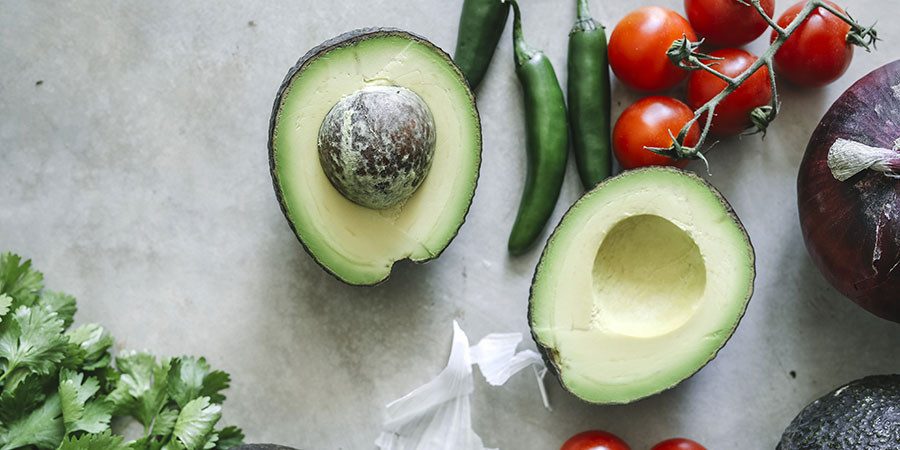How to See Ayurveda in All Foods
Renowned Ayurvedic doctor Ramkumar Kutty answers many of his patients’ questions with the curious phrase, “it depends!” It became such a familiar refrain that those of us studying with him began lovingly suggesting to him that perhaps Ayurveda is the science of “it depends."
This, of course, is not to diminish this incredible, time-tested science, but to acknowledge its unique complexity. In Ayurveda, there is no “one-size-fits-all.” What works for you might not work for another, recalling the old adage that one person’s medicine might be another person’s poison.
Among the many unique qualities of Ayurveda is its capacity to address situational and individual needs, acknowledging that we all have different constitutions, physical challenges, strengths, and weaknesses. We live in different regions of the world and don’t always have access to Ayurvedic ingredients that are indigenous to India.
Bitter melon, snake gourd, black gram, urad dal, finger millet, jamun fruit, buffalo milk yogurt, neem flower, bamboo shoot, brinjal, khol, methi leaves, curry leaves, ajwan, asafoetida—not at your local store? This should not limit or hinder your ability to align with Ayurvedic principles.
Even something as standard and simple as kitchari, a creamy bowl of mung beans and rice, isn’t always easy to adapt. Many can’t find mung beans in their local markets, and others just don’t love the texture or the taste.
Hence, it depends. We are not going to adopt a sustainable Ayurvedic lifestyle unless we can adapt Ayurveda to what is available where we live, what is palatable to us, and how our individual digestive system reacts to these meals.
By learning the basics of an Ayurvedic diet, we can apply these concepts to any foods. No matter what is in your pantry or available at your local grocery or farmers market, here are five basic principles to keep in mind when preparing your meals:

1. Mind Your Gunas
The Bhagavad Gita divides foods into three classes: those of the quality of goodness (sattva), those of the quality of passion (rajas), and those of the quality of ignorance (tamas). The most healthful are the foods of goodness.
“Foods of the quality of goodness increase the duration of life; purify one's existence; and give strength, health, happiness, and satisfaction. Such foods are sweet, juicy, fatty, and palatable, like ghee, grains, fruits, and vegetables.”
In the philosophy of Ayurveda, these qualities are the three gunas, or dynamic qualities of nature. These qualities exist everywhere there is life.
Yoga and Ayurveda both look at the gunas for simple guidance as to what we should eat, suggesting that if we want to feel balanced, peaceful, clear, and light we should eat sattvic foods. These foods are full of prana, or life vitality that renews and replenishes us.
Yet while saints and sadhus can survive on sattvic foods alone, those of us who live “in the world” and have to keep pace with its changes may also need some rajasic energy. It’s best to keep a balance between mostly sattvic and some rajasic foods, and to do your best to avoid tamasic foods altogether.
Sattvic Foods
Sattvic foods are fresh, juicy, light, unctuous, nourishing, sweet, and tasty. They provide energy to the body without taxing it and form the foundation of higher states of consciousness.
Examples of sattvic foods include juicy fruits, fresh vegetables that are easily digestible, fresh milk and butter, whole soaked or sprouted beans, grains, and nuts, and many herbs and spices in the right combinations with other foods.
Rajasic Foods
Rajasic foods are sour, salty, pungent, hot, and dry. They increase circulation but can also excite blood pressure and activate the nervous system. Rajas refers to stimulation, intensity, activity, and motion. In excess, it can lead to stress, aggravation, and discomfort.
Food becomes rajasic when it has been fried in oil, cooked too much, or eaten in excess. They are foods and spices that are strongly stimulating, including coffee and other stimulants, very hot spices, garlic, and onions.
Tamasic Foods
Tamasic foods are dry, old, decaying, distasteful, and consume a large amount of energy to digest. Tamas refers to rotting and stagnation. Mentally, it feeds sluggishness, doubt, and pessimism.
Tamasic foods include those that have been strongly processed, canned, or frozen, as well as those that are old, stale, or incompatible with each other. Excessive consumption of low-quality meat, processed sugar, and liquor is considered especially tamasic.
Takeaway: Seek Sattva. As much as possible, choose foods that are fresh, locally harvested, organic, and unprocessed.

2. Mix the Six Tastes
Ayurveda categorizes food into six tastes, or shad rasas. They are sweet, sour, salty, pungent, astringent, and bitter. The foods associated with these tastes are comprised of two elements each and feed those same elements within the body.
When combined, all six tastes in a meal feed and balance all five elements in you. If you have ever felt cravings after a meal, or full yet dissatisfied, it’s likely you did not have all of the six tastes in that meal.
Once you begin practicing this, it soon becomes second nature to include all six tastes in your meals. If you started with rice and steamed vegetables, for example, it can be as simple as adding lemon juice for sour, dulse or tamari for salty, ginger or your favorite aromatic herb for pungent, toasted seeds as a topping for astringent, and lemon zest for bitter.
Sometimes what you drink with your meal can bring in a missing taste and provide just the balance needed. For example, sipping ginger tea helps bring in the pungent taste and green tea adds an astringent taste.
Takeaway: Include all six tastes for flavor and complete nutrition. Taste and adjust—a good rule for life!
Example Meals
| Rice, Beans & Greens | |||
|---|---|---|---|
| Taste | Ingredient | ||
| Sweet | Rice | ||
| Astringent | Legumes | ||
| Bitter | Leafy Greens | ||
| Sour | Lime Juice | ||
| Pungent | Ginger | ||
| Salty | Mineral Salt | ||
| Lemony Rice | |||
|---|---|---|---|
| Taste | Ingredient | ||
| Sweet | Rice | ||
| Sour | Lemon Juice | ||
| Salty | Mineral Salt or Minced Dulse | ||
| Astringent | Garnish with Seeds like Toasted Pumpkin Seeds or Ground Flax | ||
| Bitter | Garnish with Lemon Zest or cook in a few Leaves of Spinach | ||
| Pungent | Garnish with Fresh Basil | ||
| Breakfast Porridge | |||
|---|---|---|---|
| Taste | Ingredient | ||
| Sweet | Grain | ||
| Salty | Mineral Salt | ||
| Sour | Coconut Yogurt | ||
| Pungent | Cardamom | ||
| Bitter | Orange Zest or Cacao Nibs | ||
| Astringent | Sip a Cup of Green Tea with Your Meal | ||
| Breakfast Toast | |||
|---|---|---|---|
| Taste | Ingredient | ||
| Sweet | Toast | ||
| Sour | Honey | ||
| Pungent | Cinnamon | ||
| Astringent & Sour | Tea with Lemon | ||
| Bitter | Lemon Zest | ||
| Salty | Touch of Mineral Salt | ||
3. Seek the Sun
What are we seeking when we eat? To satisfy hunger, or perhaps satisfy a craving? Ideally, we are seeking to nourish, strengthen, build healthy tissue, and renew energy.
We are seeking prana, the vital energy of life. We are also, fundamentally, seeking light—sunlight!
Natural food grows through its capacity to metabolize sunlight. Each of the six tastes conveys a ray of the spectrum of light. Ideally then, when we eat a meal, we are eating second-hand sunlight.
Food begins to lose prana after its harvest. So, when eating something that has been sitting on a shelf, add fresh, living ingredients to optimize the amount of prana available from that meal. When opening a bag, box, or can, toss it with something fresh. Pasta with broccoli, rice with spinach, beans with fresh garden greens, and so on.
Takeaway: Be a light seeker: Eat foods rich with sunlight and radiant prana. Revivify canned or packaged foods with a handful of fresh greens, fresh herbs, or spices sautéed in ghee.
4. Eat with the Season
Each season, nature offers the foods that help balance its seasonal weather conditions. In the spring, for example, when fog, rain, and the melt of winter’s snow swells the rivers, nature dazzles us with color and edible wilds that are heating, astringent, and bitter.
Mustard greens, arugula, watercress, radicchio, nettles, kale, spinach, radishes, wild onions, garlic, chives, oregano, basil, parsley, and thyme counter spring’s heavy, wet, and cool qualities with light, dryness, and warmth—helping release winter stagnation and bring lightness for the summertime.
Summer’s bounty is cooling, refreshing, even sweet. Butter lettuce, squash, melons, cilantro, and juicy fruits help keep us balanced, cool, and sated.
Our ancestors learned to preserve foods in the autumn to get through winter—fermenting fruits and vegetables, drying grains and legumes, storing root vegetables in a cool, dark place, and culturing dairy into yogurt and ghee. Using these preserved foods means a meal will need to be rehydrated and cooked and will taste better with spice. They lend themselves to making soups or stews, especially when we crave hot liquids to moisten and warm against the dry, cold air of winter.
In winter, sautéing spices in ghee and adding a handful of spinach or other fresh vegetables may be enough for a satisfying meal.
Takeaway: Nature’s intelligence includes naturally balancing ingredients for the primary dosha of each season. When considering your next meal, add something straight from this season’s garden to optimize balanced wellness.

5. Optimize Digestibility
“You are not what you eat: You are what you digest.”
Our ancestors harnessed fire some two million years ago. It was a game-changer in human evolution and is now considered to be a cultural need—a knowledge passed down through generations which we can no longer live without.
Digestion takes a lot of energy. Fire pre-digests food, making it easier to break down and absorb a higher concentration of nutrients than when we foraged and ate purely uncooked foods. With less energy needed to forage and digest, the human brain and human culture rapidly advanced.
Warm foods aid digestion, in the way that warmth encourages blood flow. Even in summer, it can help to have your meals very lightly cooked, steamed, or grilled.
Spices also help fire up digestion. Ginger, clove, cardamom, cinnamon, and black pepper, just to name a few, have long been used with foods that are heavy and harder to digest. Even herbs and spices that are cooling, like mint, cilantro, and fennel, can greatly aid digestion. Ayurveda is an invitation to explore which herbs and spices work best for you.
Takeaway: Fire it up to optimize digestion. Enjoy cooking with herbs and spices to increase flavor and support strong digestion.
Putting Concepts into Action
When preparing a meal, keep in mind Dr. Ramkumar’s guiding principle: It depends!
How does your meal make you feel? Does it vitalize or make you feel sluggish? Does it leave you feeling satisfied or with lingering cravings? How well does it digest?
The Ayurvedic food lists for each dosha are incredibly helpful guidelines. But remember, they are only guidelines, not hard and fast rules. By paying close attention and trusting your unique experience, you access your own body’s wisdom. Discovering your own individual expression of these universal principles is the true gift of Ayurveda!
A Quick Key
Add fresh ingredients when cooking with foods that are dried, frozen, or packaged, then add spice, seasoning, or garnish to fill out the six tastes. You will not only have a healthy meal, but a delicious one, as prana and the six tastes naturally delight the senses.
Here are a few examples of how to bring balance to your meals:
- Canned Beans: Seek prana by adding light, fresh greens.
- Pasta: Balance the heavy quality with light, fresh vegetables and herbs.
- Greens: Warm them slightly. For vata, add coconut milk to add sweetness and heaviness.
- Cauliflower: Add cumin to support digestion.
- Fruit: A great way to “seek the sun” but eat it separately for optimal digestion.
- Dairy/Cheese: Add pungent spices like black pepper, oregano, or clove.
- Legumes: Add spices and oil to balance the dry, rough qualities.













